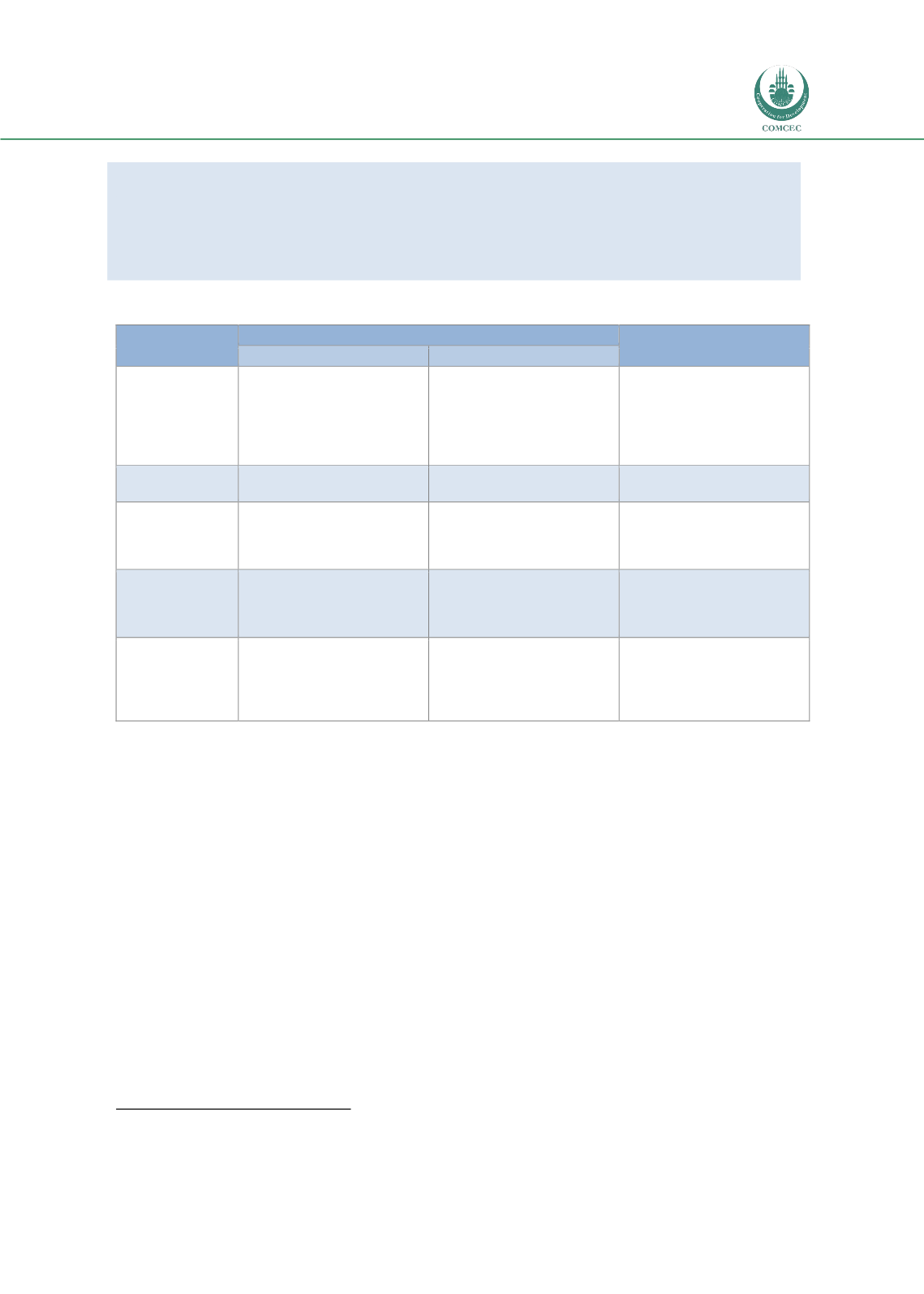

Facilitating Smallholder Farmers’ Market Access
In the OIC Member Countries
129
Association of Malawi (NASFAM) and the International Crops Research Institute for the Semi-Arid Tropics
(ICRISAT) reduces the costs of testing from US$ 25 to US$ 1 per sample. The kit enables farmers even in
remote locations to monitor toxin levels in groundnuts before and after harvest. As a result, more than
4,000 NASFAM farmers have been able to meet food safety standards and export groundnuts to Europe
under fair trade agreements. ICRISAT is now seeking to extend the test kits to other African countries.
Source:
Authors, based on SciDevNet 2013, Unnevehr and Grace 2013, and The Guardian 2012.
TABLE 26: PUBLIC AND PRIVATE OPTIONS FOR STRENGTHENING SMALLHOLDER FARMERS’
LINKS TO MARKETS
Issue
Public sector
Private sector
Public investments
Policy environment
Lack of access to
markets
Invest in education, rural
infrastructure (roads,
markets, electricity,
irrigation).
Support formation of
producer organizations.
Liberalize domestic trade,
foster development of input
and credit markets.
Assist farmers in forming
producer organizations.
Weak technical
capacity
Support market-oriented
extension.
Foster environment for
private extension to emerge.
Provide extension and key
inputs to farmers.
Meeting quality
standards
Support farmer training on
good agricultural practices for
quality enhancement and food
safety.
Establish grades and
standards.
Supply inputs and train
farmers in quality
management and food safety.
Meeting contract
conditions
Train firms in contract
design and management.
Train farmers in their rights
and obligations.
Foster institutions for
dispute resolution.
Strengthen producer
organizations.
Foster trust; develop
contracts that are self-
enforcing.
Farmers’ exposure
to risk
Foster development of
commodity and futures
exchanges.
Train firms to use market
instruments to hedge risk.
Create enabling environment
for insurance market.
Use contracts that share risks
among parties.
Assist farmers to obtain
insurance.
Source:
World Bank 2007.
India and China offer specific examples of how government and the private sector have
facilitated linkages for smallholders.
203
In all of these examples of innovative ways to
connect smallholders and modern retailers, aggregation seems to be a prerequisite for
reducing transaction costs.
204
The scalability and sustainability of the following measures
remains an open question, but they demonstrate that private food retailers are looking at
different ways to source produce reliably from smallholder farmers.
Upgrade wholesale markets.
In China, the Ministry of Commerce matched leading
wholesale markets with leading food firms to act as “modernization anchors” to
invest in and help upgrade wholesale market infrastructure
Develop rural business hubs.
In India, private firms have set up rural business hubs
typically consisting of small supermarkets with an input retail shop and sometimes
procurement facilities for grain, milk, or vegetables. The private firm also invites
partners from the banking, insurance, and health sectors to set up “store-in-store”
203
Reardon (2011).
204
Reardon (2011).

















